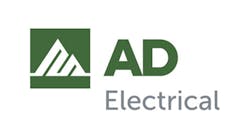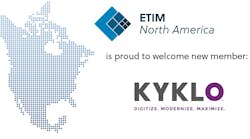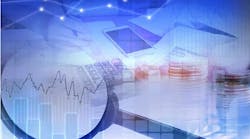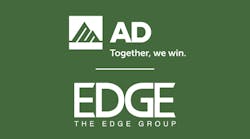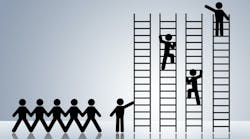Electrical wholesalers are the primary purveyors of submetering equipment to the electrical contractors who install it. The myriad of public and private sector energy policies, while at times complicated, provides fertile ground for submeters as energy profilers and program verification tools. This article briefly overviews the main policies now in effect, with an eye toward their potential for submeter sales.
According to Department of Defense (DOD) figures, that agency's more than 620,000 buildings on 400 installations around the country consume over $2.5 billion worth of energy every year. As the nation's single largest energy consumer, the DOD represents 78 percent of all federal energy use and is a significant consumer of electricity in many areas of the country. That's why the government has become keenly aware of the need to not only conserve energy, but to invest in reduction measures that make good business sense while, at the same time, contributing to readiness and modernization.
This is only one example of why, in response to rising energy costs and tightening budgets, many new public and private-sector energy policy initiatives have been launched in the last few years to micro-manage existing resources, reduce greenhouse gases and encourage, whenever possible, the move toward renewable, non-fossil fuel energy sources. Although similarities exist in many of these programs, the common thread in all of them is the clear need for advanced submetering hardware and automatic meter reading (AMR) software solutions to cost-effectively benchmark, measure and verify compliance with whatever program guidelines the facility is pursuing.
A Cook's Tour of the Leading Energy Initiatives
Following are a dozen of the leading energy initiatives now impacting the industrial, commercial, institutional and multi-family facility landscape. Submetering solutions readily available through many electrical distributors can help end users comply with these policies in specific application areas.
Demand response programs. As the name implies, demand response programs allow utilities and consumers to manage electrical demand, measured in kilowatts (kW), in response to supply conditions. For example, by reducing consumption (measured in kilowatt hours (kWh)) in times of high prices or limited supply, pressure is relieved from the grid, keeping costs down. Many utilities provide incentives for users to voluntarily curtail their demand by monitoring their electrical usage and shaving peaks to provide a flatter energy profile. Submeters are effective in demand-response scenarios, because they track kW and kWh so end users can shed load, verify compliance with program regulations and other functions. Time-of-use (TOU) or real-time metering is especially useful where tariffs are tiered according to on-peak, mid-peak and off-peak schedules.
DOD's Instruction 4170.11. Revised in November 2005, this DOD regulation provides a comprehensive guideline for energy management practices in all DOD components and facilities. Compliance with all relevant executive orders and federal energy conservation requirements is mandated, including EPAct 2005, Energy Star, LEED, etc. Section 5.2.4.2. Metering mandates application of meters and/or submeters in all appropriate facilities. Also outlined are several electrical load reduction measures that all installations can implement, including energy management control systems (EMCS), submetering and duty-cycling HVAC systems during power emergencies. By mandate, meters with interval data recording and remote reading capabilities will be installed in all new construction by 2012, along with the metering of natural gas and water.
The Energy Independence and Security Act of 2007 (EISA 2007). This federal law is an omnibus energy policy designed to strengthen existing energy reduction goals and energy management requirements not only in government buildings, but throughout business and industry, as outlined in Title IV, Subtitles A-G. Section 543 states that energy consumption per gross square foot of federal buildings shall be reduced — compared to 2003 levels — from 2 percent in fiscal 2006 to 30 percent in fiscal 2015. Section 434(b) further states that by no later than Oct. 1, 2016, each agency shall provide for equivalent metering of natural gas and steam, in accordance with established guidelines. For the electrical contractor, this is easily and inexpensively accomplished, since advanced metering products from E-Mon and other vendors provide an easy, economical way to interface existing water, gas, steam and other pulse-output utility meters into the AMR system — including inexpensively upgrading them to wireless capability.
The Energy Policy Act of 2005 (EPAct). This federal law contains several sections pertaining specifically to metering. An extremely useful ancillary document (available online) is the DOE's Feb. 3, 2006 “Guidance for Electric Metering in Federal Buildings.” This publication provides a very useful and detailed overview of submetering applications, features, benefits, system issues and much more. The submeter-specific policy areas of EPAct 2005 include: Section 103 - all federal buildings must be metered by 2012; Section 1251 — net metering; Section 1331 — $1.80-per-square-foot tax deduction for the design and construction of energy-efficient buildings. Originally slated to expire at the end of 2008, the Emergency Economic Stabilization Act of 2008 (H.R. 1424) extended the “Energy-Efficient Commercial Buildings Deduction” to Dec. 31, 2013, per Section 303.)
EPA/DOE EnergyStar. Introduced in 1992, this joint program has expanded beyond office equipment products to major appliances, lighting, new homes and even commercial and industrial buildings. The EnergyStar building performance rating system has already been implemented in more than 60,000 buildings. It provides fertile ground for submetering-based performance assessment through data collection and management, establishing performance baselines, auditing and analyzing energy patterns and trends and normalizing energy data for fair and accurate comparisons.
Executive Order 13423. “Strengthening Federal Environmental, Energy and Transportation Management” deals with a broad range of issues from petroleum conservation to electronics management and everything between. The measure's Energy Efficiency guidelines claim to be “50 percent more stringent than the goal in the Energy Policy Act of 2005.” Section VI. “Energy & Water Management, A. Strategies and Tools, (3) Metering” mandates the installation of metering devices for potable water, electricity and thermal energy. Collected data is to be used by federal tracking systems and made available to federal facility managers for energy service contract negotiations. Opportunities for submetering under E.O. 13423 include energy efficiency and reductions in greenhouse gas emissions and sustainable design/high-performance buildings.
Green Building Initiative's (GBI) Green Globes building rating system. This initiative claims to be a simpler, more user-friendly process for assessing and integrating green design principles for buildings. Submitted in 2006 to an independent review committee of more than 100 representatives from various green building interest groups, Green Globes is on track for acceptance as an ANSI standard in 2008. GBI also works with local chapters of the National Association of Home Builders (NAHB), Washington, D.C., to develop green building programs in the community, and is engaged in educating consumers on the value of green building techniques. As with other programs, submeters will provide the basic energy monitoring tool for measurement and verification with policy guidelines.
EPA's Green Power Partnership. This program promotes renewable energy awareness and is designed to incentivize high-volume power users to offload part of their energy needs to renewable (non-fossil fuel) sources. The agency provides its customers with expertise in technology issues, identification of green products and services and promotional awareness.
Participation levels are based on the amount of green power purchased from renewable energy sources constructed after Jan. 1, 1997, as a percentage of the using organization's total annual base load in kWh. For example, a facility that uses 1 million kWh to10 million kWh per year would have to buy 6 percent of its energy from green power sources to qualify as a “Green Power Partner.” To qualify as a “Green Power Leadership Club” member, 60 percent of the facility's annual power buy would have to come from renewable sources. Whatever renewable energy source is used, the electrical load still has to be monitored and reported to verify compliance, an ideal application for submeters and AMR software.
LEED. The building industry's most widely used sustainable building assessment tool is the U.S. Green Building Council's Leadership in Energy and Environmental Design (LEED) rating system. Of the system's nine categories in the table on page 47 “LEED Certification,” the left-hand column below lists those areas in which submeters contribute to obtaining certification points, including Water Efficiency (WE) and Energy & Atmosphere (EA) credits.
DOE's Industrial Technologies Program (ITP). Called “Save Energy Now,” the DOE launched this program to improve industrial energy management through no-cost energy assessments in partnership with national supply chains, industry associations, state and local agencies, utilities, etc. Energy assessments focus on process heating, steam, pumps, fans, compressed air, HVAC and others. The program also offers a portfolio of resources, including training and education on best practices and tools, to help users become smarter on industrial energy conservation issues. Submetering opportunities in this environment include benchmarking equipment performance, diagnostics, tracking individual processes to isolate electrical loads and more.
Standard 189P. Known as the “Standard for the Design of High-Performance Green Buildings Except Low-Rise Residential Buildings,” the American Society of Heating, Refrigerating and Air-conditioning Engineers (ASHRAE), Illuminating Engineering Society of North America (IESNA) and U.S. Green Building Council (USGBC), claim it's the first green building standard in the U.S. developed for inclusion in building codes.
Still under development as a joint proposal of these organizations, Standard 189P will provide minimum guidelines for green building practices for new commercial buildings and major renovation projects. Energy efficiency goals will include a minimum 30 percent reduction in energy cost (and CO2 equivalent) compared to Standard 90.1-2007.
DOE's Transformational Energy Action Management (TEAM) program. This is designed to provide a “replicable” federal model for reducing energy intensity across the nationwide DOE complex by 30 percent and save taxpayers $90 million annually through a transformation of the DOE's energy, environmental and transportation management policies. Working closely with EISA 2007 and E.O. 13423 objectives, TEAM's eight core goals include several that may be directly facilitated by submetering, including:
-
Reduce energy and water consumption by 30 percent and 16 percent, respectively, in all DOE facilities.
-
Achieve LEED Gold certification on all new buildings and major renovations in excess of $5 million.
-
By 2011, improve the energy efficiency of all data centers by 10 percent.
Bottom line considerations. The public and private-sector facility landscape is changing rapidly, because they are driven by economic challenges and the need to save energy and cut operating costs. Savvy distributors and contractors will see in this bewildering array of energy programs opportunities for selling and installing the equipment that will help users meet the new requirements. Submeters are a perfect example of core equipment needed for the application. The old energy adage, “You can't manage what you don't measure,” is particularly appropriate for today's energy-conscious facility environment and is also an extremely effective door-opener for any submetering sales pitch.
Don Millstein is president and CEO of E-Mon, llc, Langhorne, Pa., a manufacturer of electric submetering equipment, energy management software and services. He is a member of the U.S. Green Building Council, Alliance to Save Energy, the Federal Energy Management Program task force and other professional organizations. He can be reached at (215) 752-0601 or [email protected].
Submeters contribute directly toward points under several LEED green building certification categories. Because the energy initiatives all require measurement and verification of program guidelines, they provide opportunities for submeter sales.


